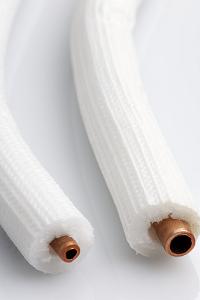
Frozen pipes can burst in the winter because of built-up pressure, and this is definitely a risk you want to minimize before frigid temperatures become a daily fact of life here in Norfolk MA.
To reduce the chance of burst pipes, follow these steps:
- Begin by wrapping pipes contained in outside walls, attics and crawl spaces in insulation sleeves. These pipes are most prone to freezing because they are closest to outdoor air. If in doubt, choose the thickest insulation possible; the extra cost will be worth your peace of mind.
- Purchase some caulk to seal any holes and cracks in outside walls that are near these pipes. Look for air leaks around electrical wiring and dryer vents, too, and use caulk or insulation to keep the cold out. During a period of severe cold, even a tiny hole, invisible to the naked eye, can usher in enough cold air to freeze a pipe.
- Take the extra precaution of leaving kitchen and bathroom cabinet doors open, especially those that abut an outside wall. If you've ever opened one of these doors and felt a rush of cold air, you'll appreciate how this small act will help keep warm air circulating around these pipes.
It pays to be extra vigilant when the temperature (or the temperature with the wind-chill index) falls to 20 degrees or below. At this point, let faucets that are connected to pipes that run through unheated spaces trickle constantly. Even a slight drip of water will help relieve water pressure within the pipes.
If you turn on a faucet and no water comes out, turn off the water at the main shut-off valve and leave the faucet open. Then call the experts at Rodenhiser Plumbing, Heating & Air Conditioning. We'll inspect the pipes in your home and find ways to protect you — and your wallet — from catastrophes like burst pipes.
Our goal is to help educate our customers about energy and home comfort issues (specific to HVAC systems). For more information about other HVAC topics, download our free Home Comfort Solutions Guide.
Insulated pipe image via Shutterstock